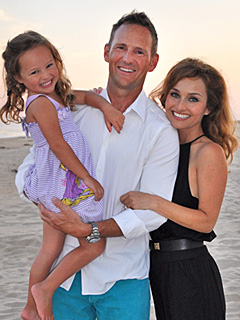PLETTENBERG BAY, SOUTH AFRICA — This resort town on the Indian Ocean coastline might seem an unlikely spot from which to muse on an entire nation, a pocket of privilege sometimes nicknamed Johannesburg-by-the-Sea.
It is a place where some of the land’s wealthiest white families maintain vacation homes comparable to those of Martha’s Vineyard or the French Riviera; where predominantly white vacationers in this Southern Hemisphere summer seem to compete for the newest German or Japanese S.U.V.’s towing the smartest powerboat.
Given South Africa’s vast inequalities — its crime, its corruption, its unemployment, its struggle with AIDS, the unhealed scars of the apartheid era — the year-end frenzy of parties, boats and beaches here might seem irrelevant to the prevailing national debate, defined by a gathering this month of the dominant African National Congress at which President Jacob Zuma sought to buttress his campaign for a second term in 2014 by embracing as his party deputy Cyril Ramaphosa, a fabulously wealthy former labor organizer beloved of the business elite and of others who hope he will curb the A.N.C.’s rampant self-enrichment.
But, obliquely, this premier vacation retreat does shine a kind of sidelight: In all of the hundreds of thousands of printed, verbalized and digitized words devoted to scrutinizing the A.N.C’s twice-a-decade elective conference at Bloemfontein, the country’s onetime obsession with race seemed conspicuously absent.
For a vacationer and onetime South Africa-based correspondent watching motorboats carve pristine wakes across the expanse of the Keurbooms River lagoon, it almost seemed as if the white minority has been given a free pass to a future once defined by its leaders as a looming apocalypse.
Of course, nothing here is that simple. South Africa’s struggle was never written in such racial monotones as its stereotypes suggested. The bloodlust for racial warfare was limited to the extreme fringes and may not have been fully diluted: At a recent court hearing, four white men were accused of plotting to kill Mr. Zuma and others at the A.N.C. conference.
By contrast, white civic and business leaders here — as elsewhere — maintain that they contribute the bulk of local taxes and charitable support to leaven the inequality with the black majority in this onetime whaling station. South Africa may claim to be a post-apartheid rainbow nation, but that dream, for some, is still a work in progress at best.
This has always been a land whose self-image is woven with contradictions. At the end of the recent conference, A.N.C. leaders toasted their avowed “unity” with Champagne, which, as one broadcaster, Hajra Omarjee, put it, was “hardly the most politically correct gesture” for a party claiming to champion the dispossessed in a land where most have never dreamed of tasting fancy French wines.
It is a nation that has long seen itself as exceptional, punching above its weight in literature, athletics, sports and business, its dreams sustained by a wealth of minerals.
Apartheid set South Africa apart, not just among its own people but across a world that condemned as pariahs its white leaders and their racial tunnel vision.
With the first free elections in 1994, a new order under Nelson Mandela forged a new moral template, built during 27 years of imprisonment and a post-liberation commitment to a future without vengeance.
But the superlatives have shifted under his successors. Statistically, South Africa is the world’s most unequal society, not simply in the glaring contrasts of black and white wealth, but also in the skewed balance between the bulk of South Africans and an emergent black superclass, including entrepreneurs and investors like Mr. Ramaphosa.
“Economic inequality is the Achilles’ heel of the South African economy,” said Adam Habib, the newly named head of the University of the Witwatersrand in Johannesburg.
Mr. Mandela, aged 94 and in poor health, spent the holidays in the hospital to be treated for a lung infection and the removal of gallstones. After almost three weeks, he was discharged Wednesday and will be treated at his home in Johannesburg, his physicians said.
Such medical bulletins make headline news: Mr. Mandela’s survival still functions as a source of reassurance, a reminder of a moral aspiration that sometimes seems to have been eclipsed by a far less dignified scramble for the spoils of his legacy through fraudulent contracts, tenders and paybacks. The democratic credential has frayed.
At the A.N.C. conference, Mr. Habib said, some votes for power blocs and slates of candidates could “only be described as an example of match-fixing.”
In some ways, thus, exceptionalism is giving way to practices that are far from the exception elsewhere in Africa.
“Ordinary men, women and children are now left out of the promise of freedom and democracy,” Mamphela Ramphele, head of Citizens Movement for Social Change, wrote in The Sunday Independent. “We must now reflect on how we should shape the future of our country to revive the dream that powered us into the freedom which we now enjoy and which is at great risk.”











